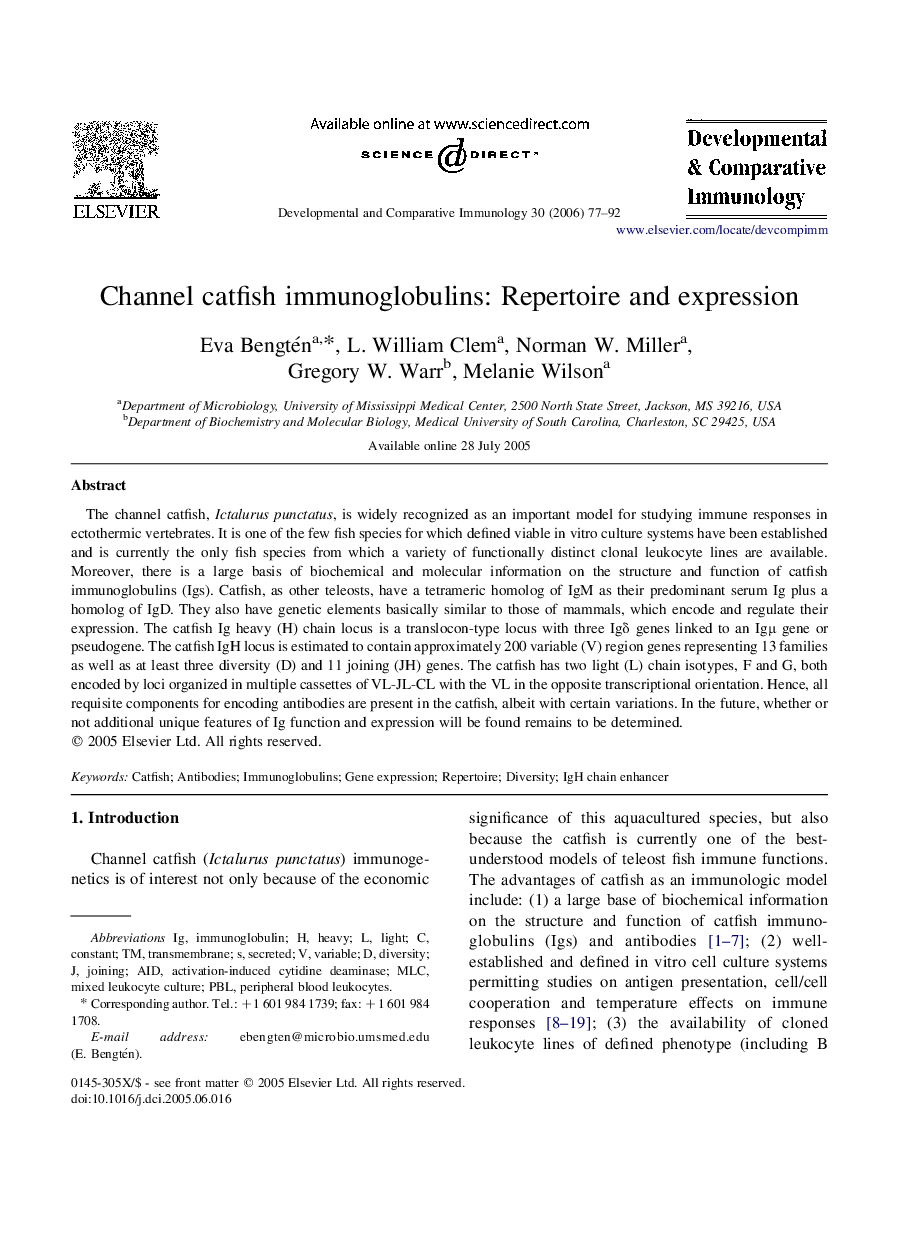| Article ID | Journal | Published Year | Pages | File Type |
|---|---|---|---|---|
| 2430432 | Developmental & Comparative Immunology | 2006 | 16 Pages |
The channel catfish, Ictalurus punctatus, is widely recognized as an important model for studying immune responses in ectothermic vertebrates. It is one of the few fish species for which defined viable in vitro culture systems have been established and is currently the only fish species from which a variety of functionally distinct clonal leukocyte lines are available. Moreover, there is a large basis of biochemical and molecular information on the structure and function of catfish immunoglobulins (Igs). Catfish, as other teleosts, have a tetrameric homolog of IgM as their predominant serum Ig plus a homolog of IgD. They also have genetic elements basically similar to those of mammals, which encode and regulate their expression. The catfish Ig heavy (H) chain locus is a translocon-type locus with three Igδ genes linked to an Igμ gene or pseudogene. The catfish IgH locus is estimated to contain approximately 200 variable (V) region genes representing 13 families as well as at least three diversity (D) and 11 joining (JH) genes. The catfish has two light (L) chain isotypes, F and G, both encoded by loci organized in multiple cassettes of VL-JL-CL with the VL in the opposite transcriptional orientation. Hence, all requisite components for encoding antibodies are present in the catfish, albeit with certain variations. In the future, whether or not additional unique features of Ig function and expression will be found remains to be determined.
